Yellow Flowers: [Species, Care, Characteristics and Meaning]
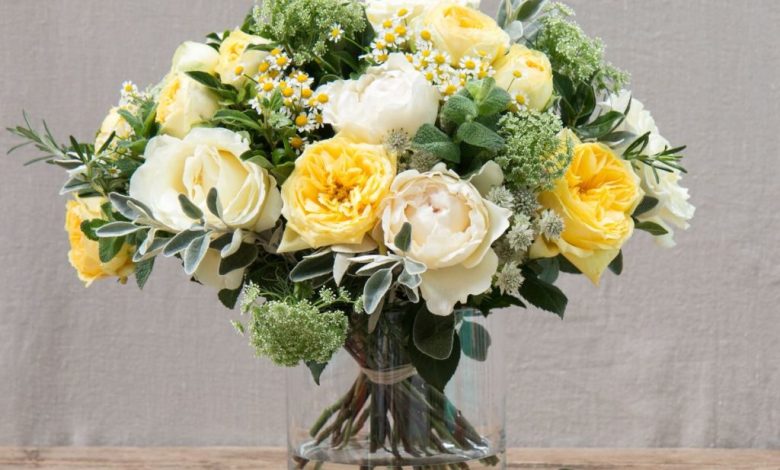
Yellow flowers are part of the most cheerful and striking versions that we can find within the color classifications.
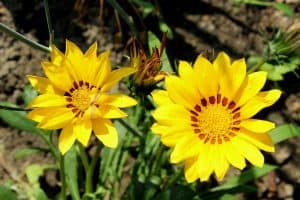 Likewise, it is important to know that there are many types that we can find, of different sizes and shapes, so decorating your garden will not be a problem.
Likewise, it is important to know that there are many types that we can find, of different sizes and shapes, so decorating your garden will not be a problem.
Do you want to see what are the possible types that exist and that you could use at home? Well, do not take off because here we will say everything.
List of yellow flowers: Our favorites
daffodils
 Within the family of yellow flowers, daffodils are one of the main protagonists due to their presence in so many Spanish gardens.
Within the family of yellow flowers, daffodils are one of the main protagonists due to their presence in so many Spanish gardens.
The star-shaped structure is made up of 6 overlapping petals around a center that is usually orange, giving it excellent contrast.
However, there is also a variety whose petals are white and the yellow center that still looks very striking. The best thing is that you can have it both indoors and outdoors, offering the opportunity to decorate your spaces as you like.
acacias
 This is a species of plant whose main characteristic is the presence of small-sized flowers in groups of bouquets.
This is a species of plant whose main characteristic is the presence of small-sized flowers in groups of bouquets.
These are detached from an erect stem that is attached through a branch from which the flowers hang.
The flower petals have a delicate and soft texture that is transmitted just by looking at them. It is a plant that can grow both indoors and outdoors because it is not very demanding. However, by size the exterior is better.
Sunflower
If we are looking for a large, vigorous and easy-care yellow flower, the sunflower is a very good alternative. It is made up of petals of different sizes that open around a center.
 Each flower needs a stem that grows quite long and has a velvety texture.
Each flower needs a stem that grows quite long and has a velvety texture.
But perhaps the most curious fact is that the flower chases sunlight, so it rotates often to obtain it. Hence the origin of its name.
yellow lilies
 They are one of the species of yellow flowers most used for floral arrangements due to their bell-shaped structure and elongated petals.
They are one of the species of yellow flowers most used for floral arrangements due to their bell-shaped structure and elongated petals.
It also has pistils that protrude from the center and add beauty to the entire flower.
The best thing is that it is not very demanding about its care, so it can be had in almost any type of terrain. Of course, it is a plant that needs a lot of humidity to stay healthy and produce beautiful flowers.
Yellow roses
 The Rosaceae family is very numerous and they surprise us with an incredible variety of colors where yellow could not be missing. A rosebush with yellow flowers will bring brightness and freshness to any garden.
The Rosaceae family is very numerous and they surprise us with an incredible variety of colors where yellow could not be missing. A rosebush with yellow flowers will bring brightness and freshness to any garden.
In fact , they are one of the versions that are obtained naturally and not by agricultural variations such as black roses.
It is important to know that there is no single yellow rose, but they can be found in different sizes and even with more or less pronounced scents. In addition, the structure of the plant takes up little space, making room to place it next to other types of plants.
freesias
 These are yellow flowers with a structure that resembles that of a small rose, which is why they are very popular.
These are yellow flowers with a structure that resembles that of a small rose, which is why they are very popular.
They occur in good quantity and one of their main characteristics is that they emit a pleasant fragrant odor that is distributed over a good distance.
Although the yellow ones tend to be the best known, there are also versions in pink and white.
tulips
 A count of yellow flowers would not be complete without the tulips that are the living expression of joy. And they show this both with their colorful flowers and their showy leaves.
A count of yellow flowers would not be complete without the tulips that are the living expression of joy. And they show this both with their colorful flowers and their showy leaves.
As they project through a raised stem, they are ideal for flower arrangements in vases of almost any size, adding decorative value to interiors.
However, tulips are not only yellow, but you can also find presentations in red, white, orange, among others.
forsythia
 The Forsythia, Forsitia or Chinese Bell is a genus of deciduous shrubby plant, native to the Asian continent that has at least one variety from Southeast Europe.
The Forsythia, Forsitia or Chinese Bell is a genus of deciduous shrubby plant, native to the Asian continent that has at least one variety from Southeast Europe.
There are at least 11 official shrubby species that reach around 1 to 3 meters in maximum height, characterized by a remarkable early flowering, in early spring.
The flowers of this ornamental plant are very yellow and have a prominent lobed corolla, with petals that only grow at the base.
They are very popular in urban gardens and parks, especially the species Forsythia x intermedia and Forsythia suspensa.
Daisies
 The daisy is a perennial and hybrid flower. It can also be considered a fast-growing and ornamental plant.
The daisy is a perennial and hybrid flower. It can also be considered a fast-growing and ornamental plant.
It is often used by gardeners as beginners because it is easy to cultivate and grow.
Daisies are usually white, but we can also find them in shades of yellow and purple, with a wide variety of petals surrounding the traditional yellow eye.
Some smaller varieties can grace the fronts of gardens, while others feature strong, attractive clumps of foliage that provide a backdrop for other flowering perennials in the garden.
Beach Poppy
 The beach poppy, also known as the sea poppy, is a non-woody, herbaceous plant characterized by its showy yellow flowers. It is classified as a perennial plant but can live from 2 to 5 years. [/your_note]
The beach poppy, also known as the sea poppy, is a non-woody, herbaceous plant characterized by its showy yellow flowers. It is classified as a perennial plant but can live from 2 to 5 years. [/your_note]
Glaucium flavum has branched stems that can measure 30 to 90 cm. Basal leaves sprout from these, fleshy, divided, serrated and fluffy, pale green.
Zantedeschia calla lily
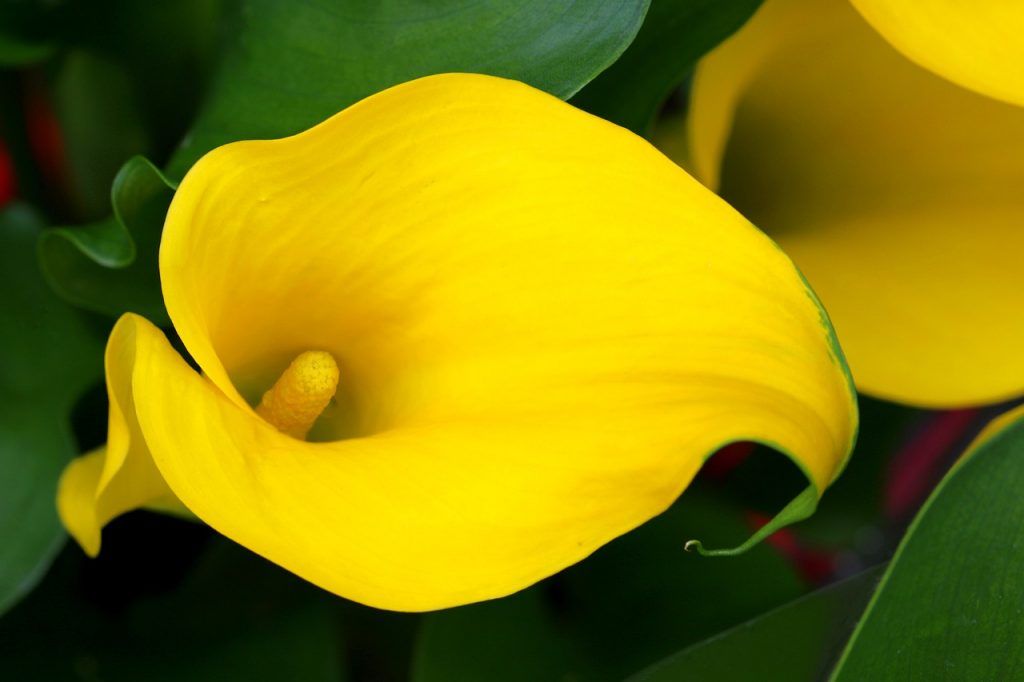
Callas are very popular for their elegant bell shape both in gardens and as cut flowers. They grow well outdoors and as houseplants.
- Soil Needs: Moist, well drained.
- Sunlight Needs: Full sun/part shade
- Tip about these yellow flowers: Normally planted after the threat of frost, Calla Lilies should be planted deep and watered well. Aside from regular watering and fertilizer, they don’t need much maintenance.
Gerbera daisy, Gerbera Jamesonii
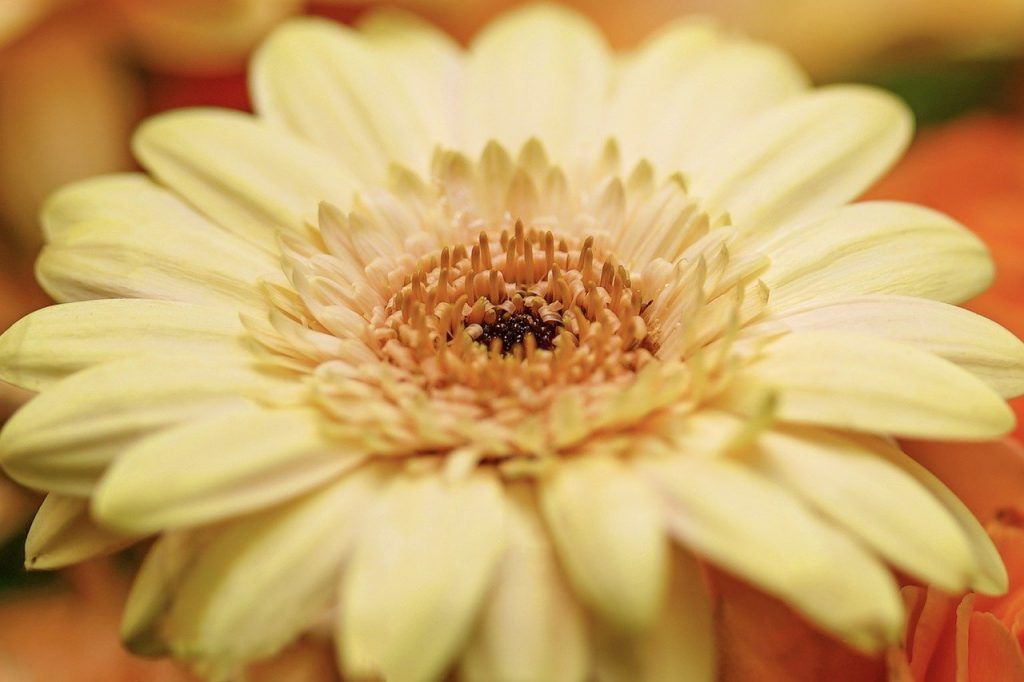
These bright and cheerful flowers come in many different colors. Gerberas can also have a size that ranges between 7 and 12 centimeters in diameter.
- Soil Needs: Well drained
- Sunlight Needs: Full Sun
- Flower tip: Watch out for crown rot, which occurs when crowns are planted too deep. This is a common problem with Gerberas.
Yarrow Achillea
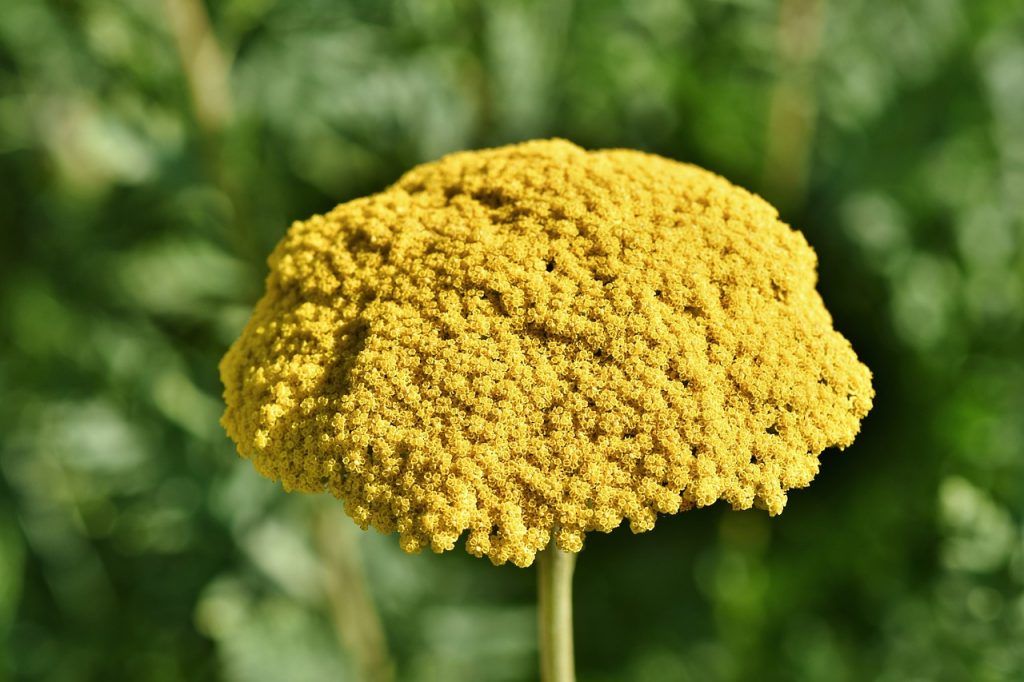
Yarrow is a hardy perennial with fern -like leaves. The flower heads are packed with small blooms that are usually white or yellow.
- Soil Needs: Well drained.
- Sunlight Needs: Full sun.
- Flower Tip: Make sure to give the Yarrow enough space. The flowers spread rapidly and can become invasive.
Hibiscus, Hibiscus rosa-sinensis
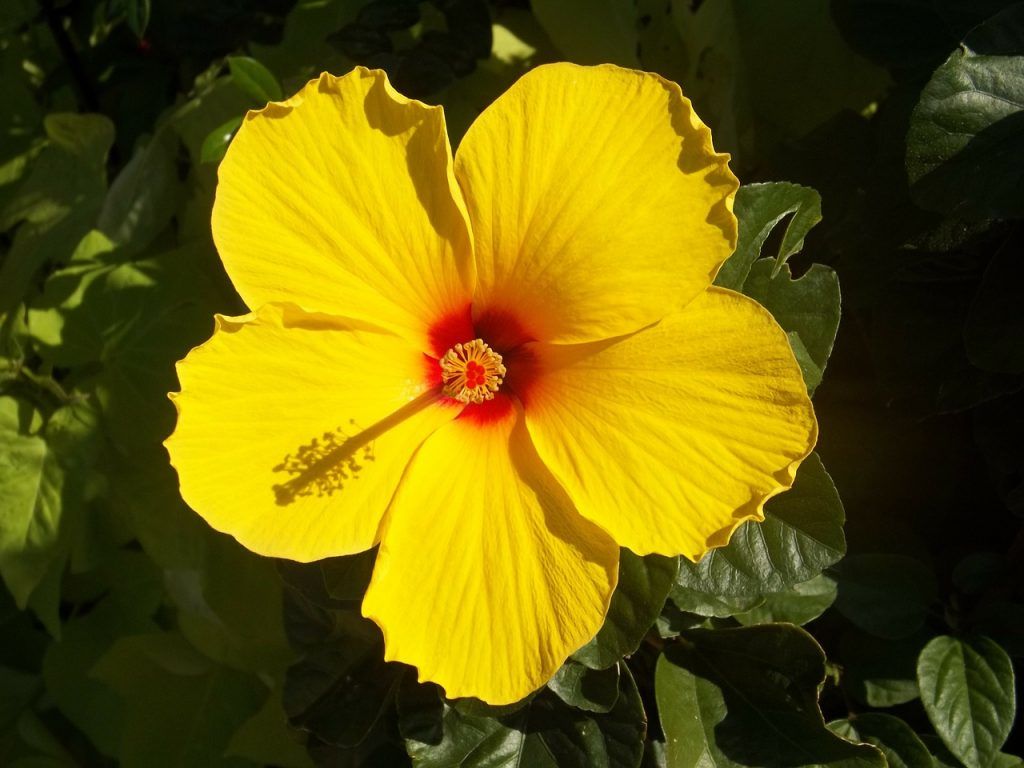
Hibiscus flowers grown on a small tree. They are huge, trumpet-shaped flowers with dark green leaves.
- Soil Needs: Moist, well drained.
- Sunlight Needs: Full sun/part shade.
- Flower Tip: These tropical flowers are sensitive to both drought and cold. Make sure they are constantly moist and protected from sub-zero temperatures.
Zinnia, Zinnia elegans
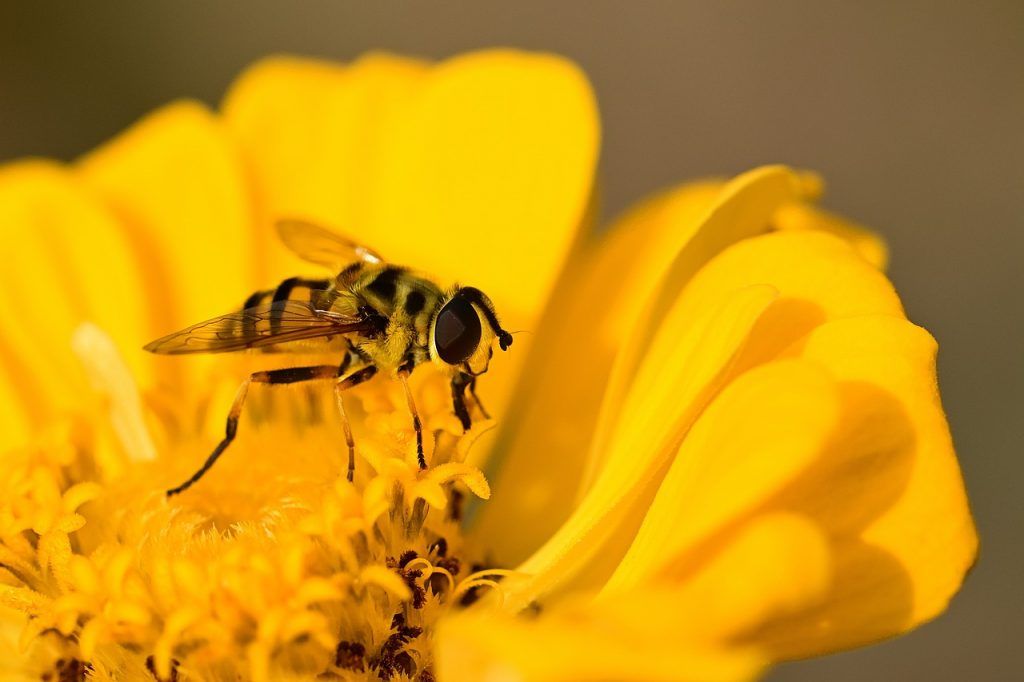
Zinnias have shiny, daisy-like heads on a tall, thin stem. They grow up to 1 meter and bloom annually.
- Soil Needs: Well drained
- Sunlight Needs: Full Sun
- Flower Tip: These flowers are relatively easy to grow. Remove faded flowers to ensure continued blooming and fertilize lightly.
perennial geranium
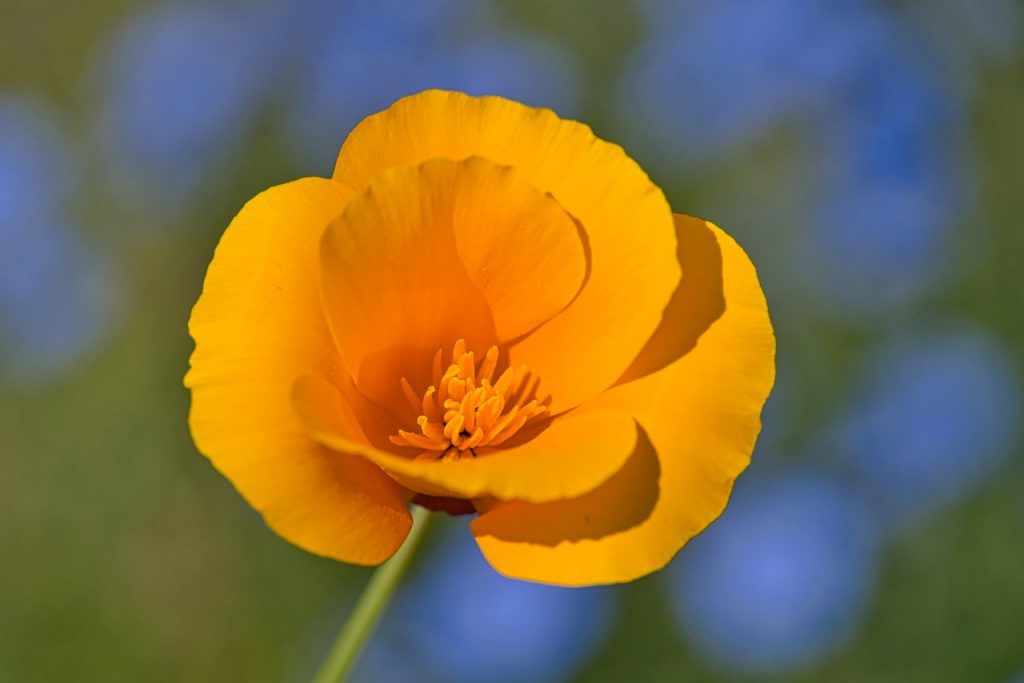
Geraniums can also have perennial yellow flowers and seem to bear endless blooms, ranging from white to deep blue, blooming from June until frost.
- Soil Needs: Moist, well drained.
- Sunlight Needs: Full sun/part shade.
- Flower Tip: It’s best to pair this summer flower with spring-blooming bulbs like hyacinths or daffodils.
Yellow butterfly bush, Buddleia davidii
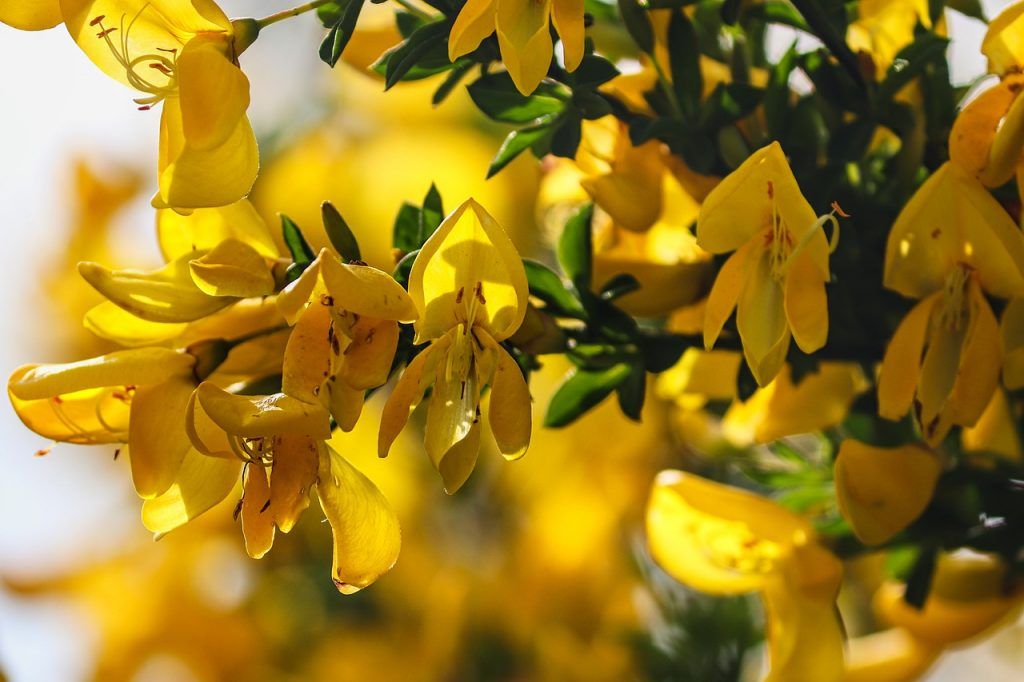
Butterfly bush has lance-shaped leaves with arching branches. The Buddleia is one of the most fragrant shrubs and attracts hummingbirds and butterflies, hence its name.
- Soil Needs: Well drained.
- Sunlight Needs: Full sun.
- Punta de la flor: La Buddleia puede crecer hasta convertirse en un árbol y desarrollar troncos robustos en climas más suaves. En las regiones del norte, asegúrate de aplicar una generosa cantidad de fertilizante en invierno para mantenerla sana durante el invierno.
Crisantemo
Comúnmente conocidos como crisantemos, los crisantemos son un clásico en los jardines durante el otoño. Hay cientos de variedades que permiten elegir entre el color, la altura, el tamaño de las flores e incluso la época de floración.
- Necesidades del suelo: Bien drenado.
- Necesidades de luz solar: Pleno sol.
- Consejo sobre las flores: El pinzado es la técnica de cuidado más importante para los crisantemos. Consiste en eliminar el vapor principal, lo que obliga a la planta a desarrollar dos nuevos tallos.
Jessamina, Gelsemium sempervirens
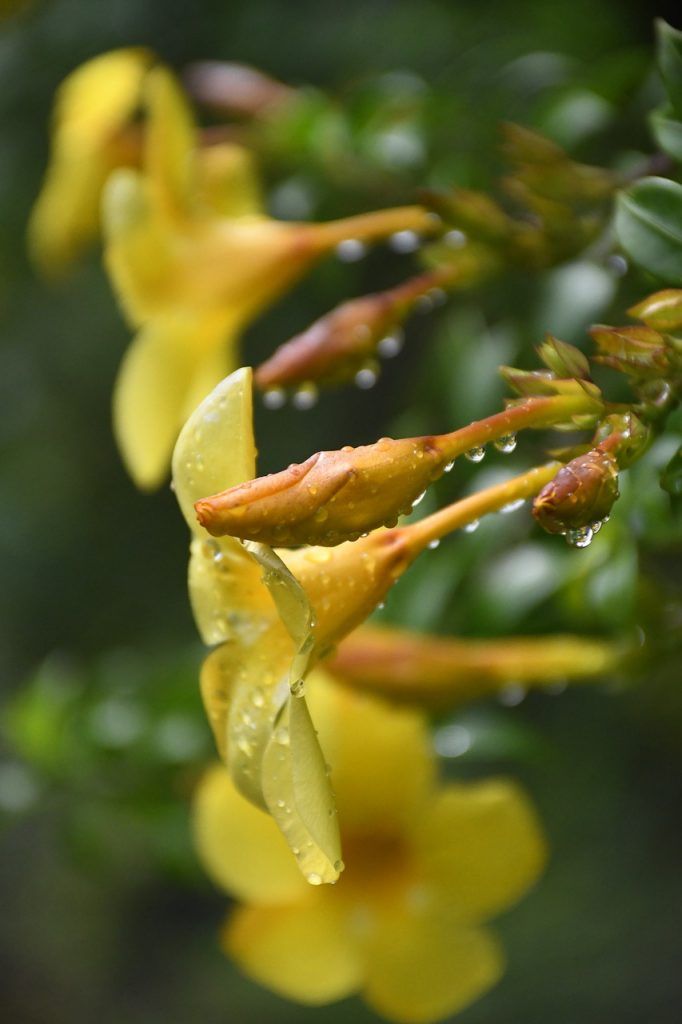
La jesamina amarilla es una enredadera de floración temprana con flores brillantes en forma de embudo. Crece maravillosamente sobre vallas, muros y espalderas.
- Necesidades del suelo: Húmedo, bien drenado.
- Necesidades de luz solar: Pleno sol/sombra parcial.
- Consejo sobre las flores: A la Jessamine no le gusta la sequedad ni el calor. Asegúrate de regar con regularidad y de proporcionarle apoyo (estaca) si empieza a crecer demasiado.
Jacinto holandés, Hyacinthus orientalis
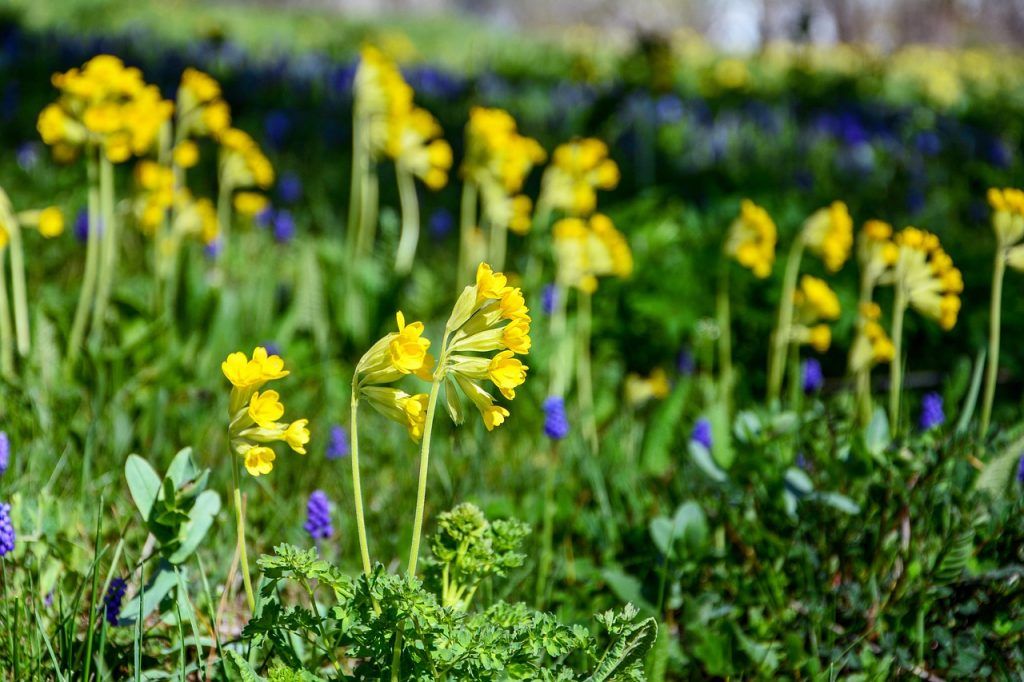
El jacinto crece a partir de un bulbo que florece en primavera. Un racimo en forma de bola de hasta 20 flores individuales florece en la parte superior de un tallo delgado.
- Necesidades de suelo: Bien drenado.
- Necesidades de luz solar: Pleno sol/sombra parcial.
- Consejo sobre las flores: Estas plantas tolerantes a la sequía son estupendas para el xerojardín. El jacinto silvestre crece bien con pocos cuidados.
Nenúfar, Nyphaea hollandia
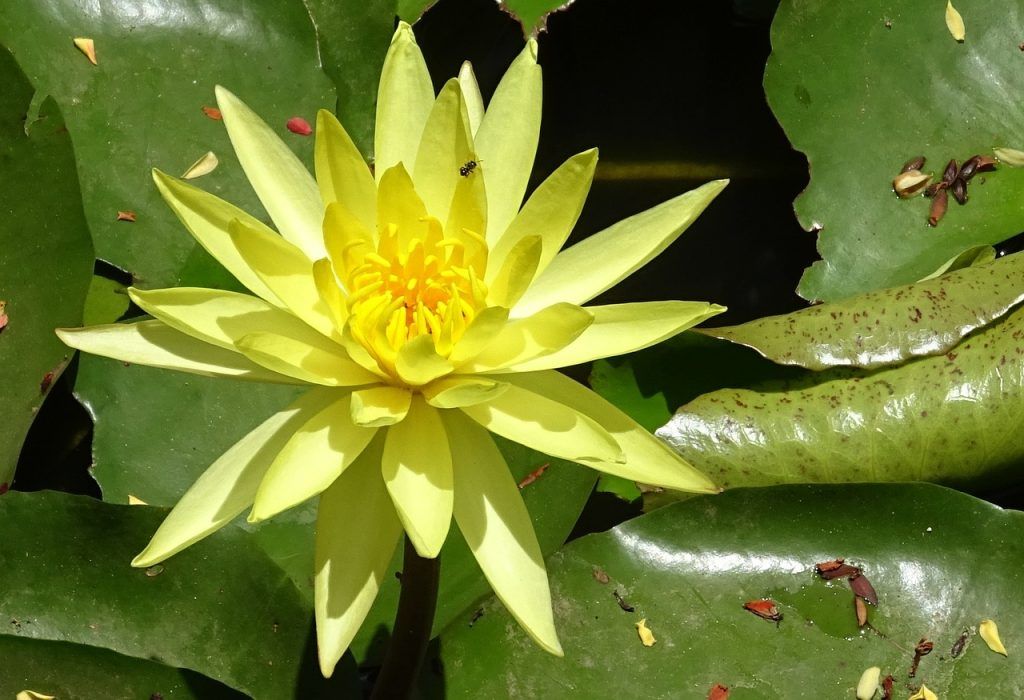
These floating beauties are surprisingly hardy despite their delicate facade. They can be grown in a small tub on a patio or in any size pond. Water lilies bloom in all colors besides blue and purple.
- Soil Needs: Moist.
- Sunlight Needs: Full sun/part shade.
- Flower Tip: When planting water lilies, be sure to remove old leaves and thick roots. You have to plant the tuber against an edge and point the growing tip up.
Coreopsis
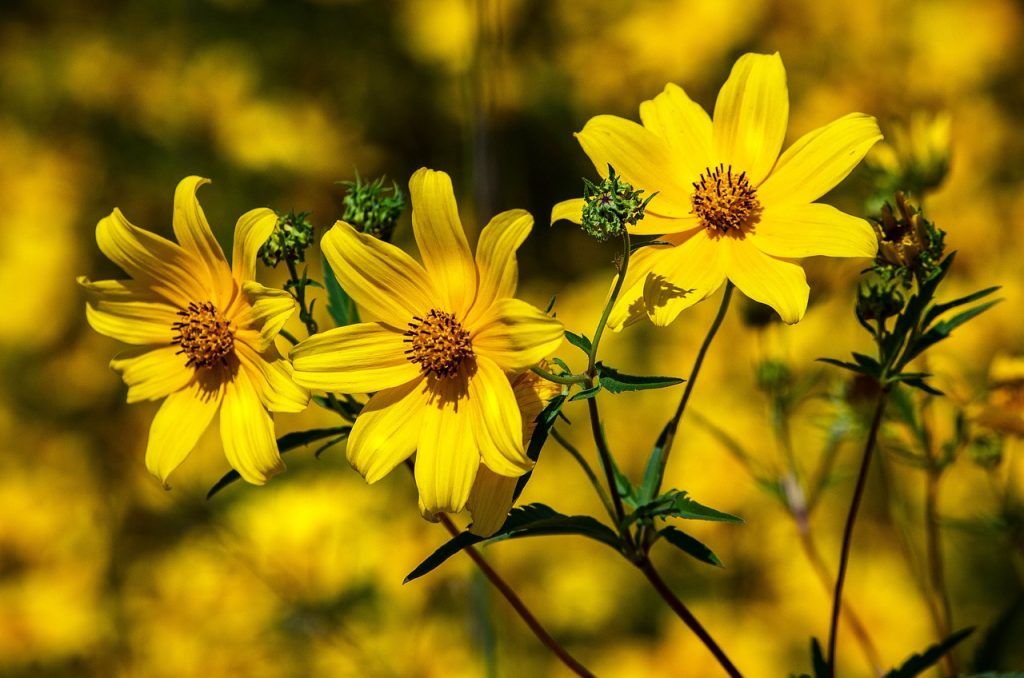
Coreopsis are yellow flowers very similar to daisies. Its petals can be of different shades of yellow and pink.
- Soil Needs: Well drained.
- Sunlight Needs: Full sun.
- Flower tip: If deadheads are removed, this flower will be the longest lasting flower in the garden.
Pansy Viola, wittrockiana
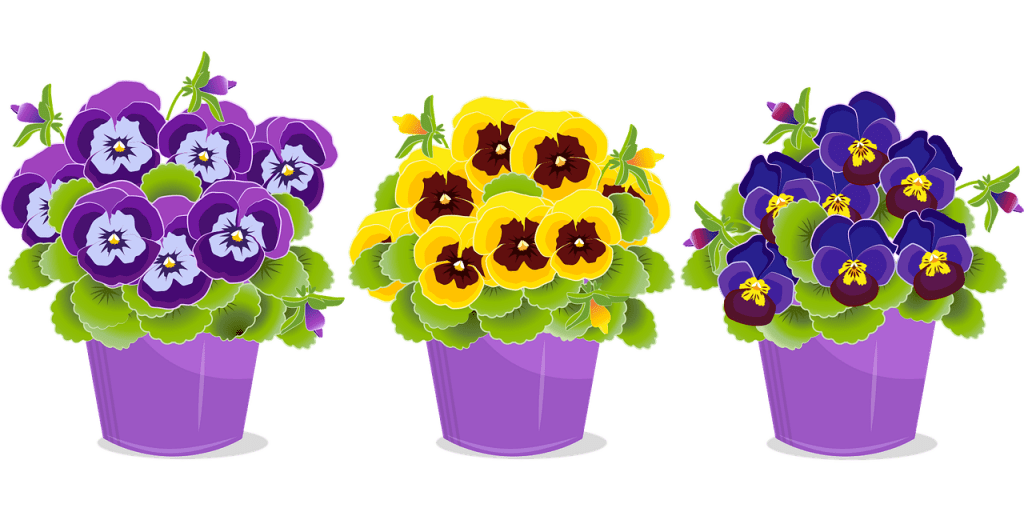
Pansies come in a wide variety of colors and can bloom in any season. They are hardy annuals that work well as borders and groundcovers.
- Soil Needs: Moist, well-drained
- Sunlight Needs: Full sun.
- Flower tip: Remember to water pansies regularly. Drought is the most common reason they fail.
Prickly pear, Opuntia humifusa
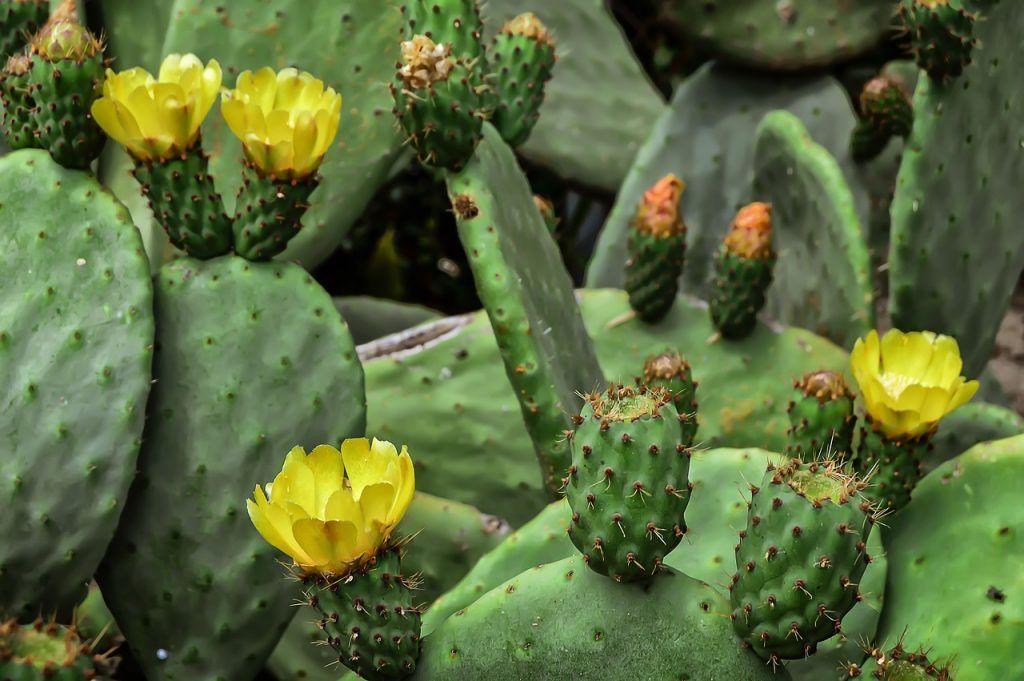
The prickly pear is a versatile cactus that can be found in warm areas, but also grows in some cold areas. They have flat, green pads that have a tendency to grow at odd angles. Its flower is yellow and as it grows in arid zones, it is very resistant.
- Soil Needs: Well drained
- Sunlight Needs: Full sun.
- Flower tip: Keep in mind that cacti can get quite large and should be planted away from pathways. If you want to plant it in your garden instead of in a pot, make a mixture of half soil and half sand.
Craspedia, Craspedia globosa
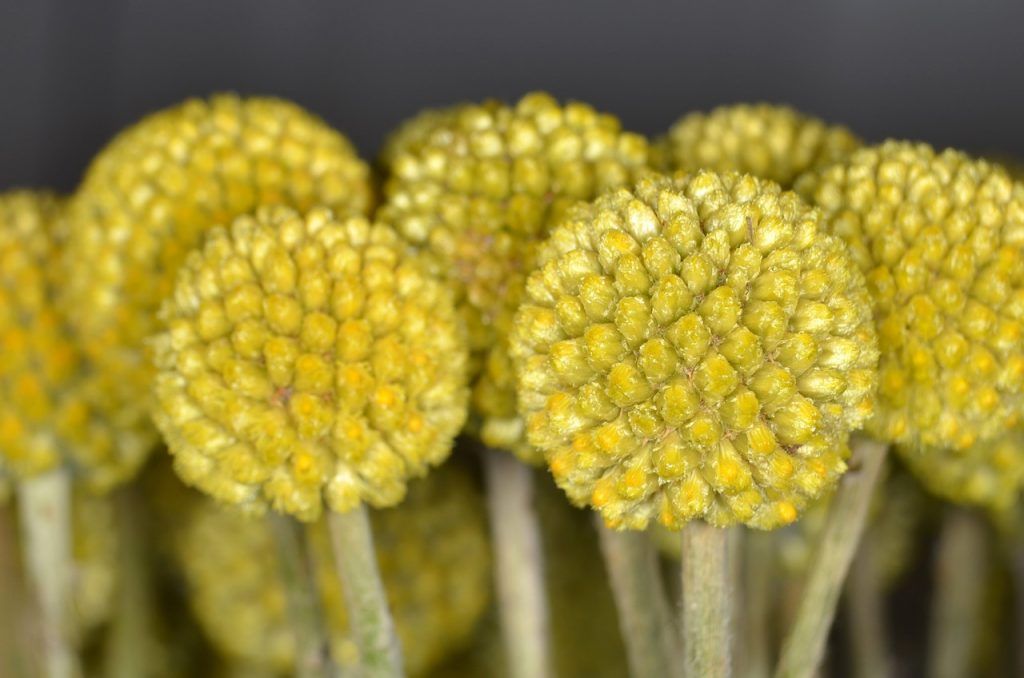
Craspedia produces round flowers that can reach the size of a tennis ball. The flowers bloom most of the year in warm climates and are yellow in color.
- Soil Needs: Well drained
- Sunlight Needs: Full sun to partial shade.
- Flower Tip: These are the perfect flowers for gardeners lookingfor low-maintenance flowering plants. They tolerate most types of soil, require little irrigation, and are highly resistant to pests and diseases.
Characteristics of yellow flowers
Yellow flowers are highly varied in their shape, size and structure, but they tend to resemble each other in that most grow in clusters.
In addition to that, there are many species that have their birth base from a stem that rises from the ground. It is also noteworthy that in some cases they occur as a result of bulbs, either in their final form or in some part of the growth process.
yellow flower care

Yellow flowers tend to be very resistant to sun and high temperatures. Although they do well with a good irrigation, they are not so demanding in this regard.
In any case, it is important to choose a terrain that can drain water well and that is worked around the nutrients according to the species.
Pruning will be carried out according to the desired objectives, either to get them to adopt a certain structure or to correct any damage. There are species that sometimes it is better not to prune until the right moment has arrived, as in the case of sunflowers.
As they are large and very showy flowers, the idea is that they can also be used for decoration, although most plantings are for industrial purposes.
Meaning of yellow flowers
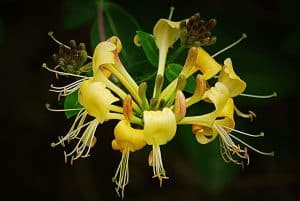 Yellow flowers are an indisputable symbol of optimism and joy, of the new, of the nascent, of the splendid.
Yellow flowers are an indisputable symbol of optimism and joy, of the new, of the nascent, of the splendid.
Each of the types that exist, give the sensation of life, of light, of hope and it is quite gratifying to see them after the winter has passed.
They are flowers widely used to give gifts to friends and family because they convey warmth, enthusiasm and genuine affection. At an ornamental level, they represent a valuable alternative because they stand out in any space and can be combined with other colors.
In addition, most of the plant species that produce these flowers are very adaptable to climatic conditions, which allows them to develop well. And you, what yellow flower would you like to have at home?
Yellow flowers throughout history
The beautiful language of flowers has been used throughout history as part of different and rich cultures and traditions. The ancient Mayan civilization, for example, considered yellow flowers in general to be a symbol of abundance.
In eastern parts of the planet, such as Japan, the color yellow is considered sacred and worthy of royalty. This belief, of course, includes yellow flowers as well.
It is rumored that the French see yellow as a color of jealousy. While this could be useful if you want to subtly send this kind of message to your lover, you might want to think twice before giving a bouquet of yellow flowers to someone in France.
Also, in Mexico, yellow flowers, especially marigolds, are only used to honor the dead.
Bibliography and references
- Charles, Victoria. (2014). Flowers. Parkstone International. New York, USA.
- Raven, Peter H.; Evert, Ray Franklin; Eichhorn, Susan E. (1992). Plant biology. Editorial Reverté. Barcelona, Spain.
- Bent, E.; Colombo, A. (2003). Tulips and bulbous. Publisher DeVecchi. Mexico City, Mexico.
- Aguirrezabal, LAN; Orioli, GA; Hernandez, L. F.; Pereyra VR; Mirave, J.P. (1996). Sunflower. Physiological aspects that determine performance. National Institute of Agricultural Technology (INTA). University of Mar del Plata. Buenos Aires- Argentina. Reproduced from: http://www.criba.edu.ar/morfologiavegetal/producfiles/papers/librogirs.pdf
- Piovano, M.V.; Pisi, G.; González Luna, M. and Mata, D. (2017). Effect of foliar fertilization on freesia stems (freesia x hybrida) from vernalized corms. Argentine Horticulture Magazine. National Institute of Agricultural Technology (INTA). Buenos Aires, Argentina. Reproduced from: http://www.horticulturaar.com.ar/bajar.php?archivo=201712140850140.1628-piovano.pdf&nombre=Efecto%20de%20la%20fertilizaci%C3%B3n%20foliar%20en%20varas%20de%20fresias%20 (freesia%20x%20hybrida)%20from%20from%20corms%20vernalized

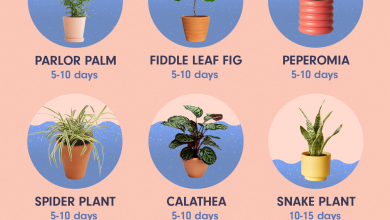
![Photo of How to Plant Lentils in [8 Steps]: Full Text and Images](https://www.complete-gardening.com/wp-content/uploads/2022/08/how-to-plant-lentils-in-8-steps-full-text-and-images-390x220.jpg)
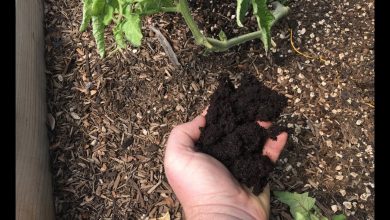
![Photo of How to Plant a Mimosa Tree: [Complete Guide + Step by Step]](https://www.complete-gardening.com/wp-content/uploads/2021/06/sembrar-mimosa-paso-a-paso-390x220.jpg)